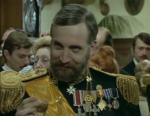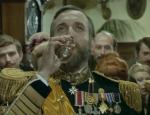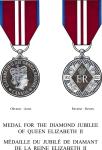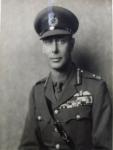-
Posts
684 -
Joined
-
Last visited
-
Days Won
3
Content Type
Profiles
Forums
Blogs
Gallery
Events
Store
Everything posted by Lukasz Gaszewski
-
I have never seen a wreath denoting a Signum Laudis (as it repeats the "war decoration" wreath used w. MVK but not w. Signum Laudis). Besides, as far as I know, the Signum Laudis was not awarded to foreign military. Baden's Orden vom Zähringer Löwen + Mecklenburg-Schwerin's Militärverdienstkreuz (or Mecklenburg-Strelitz Kreuz für Auszeichnung im Kriege ???) + Austiran MVK + Tiroler Landesdenkmünze + Hungarian WW1 commemorative medal + Bulgarian WW1 commemorative medal together is an odd combination, indeed.
-
Sorry, no chance to tell the class from the ribbon bar alone, as the British do not use any devices to denote classes of orders (only metal rosettes for multiple awards), just like it is the case in most other countries The only thing that can be said for sure is that the Order of the British Empire must be either the same classs as Order of the Bath (GCB - GCBE, KCB - KCBE, CB - CBE) or lower.
-
The Transylvania Medal (Hung. Erdélyi Emlékérem) is beautifully designed, but being made in dull aluminium spoils the impression a little. The ribbon should be plain blue, folded in the Austrian manner. The Swiss medal commemorates the 100th anniversary of Geneva's return to Switzerland. In 1789 revolutionary France incorporated the city, which became Swiss again only after the downfall of Napoleon. As far as I know, the medal was either issued by the Municipality of Geneva or unofficial (but beautiful too.) Nice findings anyway!
-
Beautiful items Pinpon and Claudio, I like them very much. Notice that they are all the WWI type on war ribbon (the peacetime ribbon was plain crimson). By coincidence, the war ribbon of Reuß Ehrenkreuz was identical to the peacetime one of Waldeck-Pyrmont's Verdienstkreuz (the war ribbon was white with black-red-gold side stripes). By another coincidence black, red and gold are the national colours of Germany today.
-
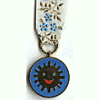
Soviet Mystery ribbon ?
Lukasz Gaszewski replied to Bill Dienna's topic in USSR: Soviet Orders, Medals & Decorations
Well, it looks strange indeed. It is certainly not Soviet and not Polish either. At the moment I see two possibilities: 1. (my initial thought) Austrian Military Service Medal (Wehrdienstmedaille) in gold. The ribbon is wider than with Soviet ribbons and the arrangement of stripes roughly corresponds to that on the bar. Honorary conferment to a Soviet military, although unlikely, is not entirely excluded. Austrian authorities after WWII paid much attention to good relationships with the USSR and its armed forces (a monument to the Red Army is still standing in the centre of Vienna). The only problem is the date. The Military Service Medal in gold was instituted in 1989 and the ribbon bar comes most probably from before 1985 (no 40th Anniversary of Victory medal to which the owner would certainly be eligible). So this hypothesis must therefore be rejected. What remains is then 2. Syrian Order of Bravery The colors and arrangement of stripes is correct, except the reversed white and red colors. This however was not infrequent in painted Soviet ribbon bars, particularly in foreign countries' decorations. I think some Soviet military advisors were present in Syria in 1960s, it is possible that the recipient was one of them. (Images courtesy OMSA ribbon database) -

Polish II Corp Collection
Lukasz Gaszewski replied to wschmidt's topic in Central & Eastern European States
Greg's ID is excellent! Let me add a bit. The eagle in the top row was worn by all generals and by those officers who had graduated the General Staff Academy or another military academy. The collar tab is artillery green. It is the type for the open collar, used in the Polish Armed Forces during WWII vs. the embroidered one in the 3rd row, used prior to the war. The yellow shield in the third row looks Romanian (there is a Romanian eagle on it). The Cross of Valour, although inscribed '1920' is the WWII type (white ribbon w. claret stripes). The single ribbon bar in the last row is faded, but it is most probably from the silver Cross of Military Bishop, a semi-official award of the Field Bishop of the Armed Forces, awarded in two classes. The cannon badge on the right seems to be the standard British artillery cap badge, probably obtained by the owner of this collection in return for something else. I hope it helped too. Now you can say "thank you" to Greg and me. -
This is the Order of the National Flag - 2nd Class, in the version (neck decoration) awarded to foreign nationals. Certainly worth buying if there is such an opportunity and the price is affordable.
-

Poland Pilot Badges?
Lukasz Gaszewski replied to wschmidt's topic in Central & Eastern European States
Left to right: - Observer - Artillery Aircraft Pilot (smaller version for civilian attire) - Pilot All from WWII Polish Air Force in the West era. -
OK, let me say what I myself see on the Prince of Wales' chest. Let me start by saying that judging from the medals he must have been kind of prophet, as he had anticipated the coming WWI. Note that his film visit must have taken place before his accession to throne, ie. before 1910. Well, most of the medals ARE at least partly British. What I see is (l. to r.): Military Cross - instituted 1914 and awarded to junior army officers. No idea what the ribbon is from. British War Medal, 1914-20 - instituted 1919, surprisingly on the correct ribbon! Conspicuous Service Cross - well, in this case it is at least technically possible, as the cross was instituted in 1901 and renamed to Distinguished Service Cross in 1914; the ribbon seems to be from the 1939-1945 Star. 1914 Star - no idea about the ribbon. Was unable to identify this. Seems a little like the Royal Red Cross, but I am not sure. It is easier about the ribbon which is probably of the Defence Medal of the Slovak Puppet State (1939-45) Aaaah, esier: Army Long Service & Good Conduct Medal - awarded to non-commissioned ranks only, ribbon correct, but as far as I know, the white edges were added after WWI. To make the things funnier, he is wearing the medal with his own effigiy... as King! I would be more than glad to know what the yellow sash is from. This regards the star as well. Any ideas, gentlemen? Ah, and do not be confused by the fact that it is worn once through the left, other time through the right shoulder. The fellow on the first photo was not the Prince, but a German officer, pretending to be him, so he probably did not know how to wear it correctly, or perhaps it was the Prussian Order of the Black Eagle - certainly the right thing in the right place during a visit to France!!! :D As far as the one hanging from the neck is regarded, it can be the Order of St. John of Jerusalem, so technically the Prince could wear it. Yet, the picture is too unclear to see the details. Anyway, the only correct item on His Highness' uniform seems to be the Royal Victorian Chain. Congratulations wardrobe master! To sum up the whole thing: HELP!!!
-
I think the fidelity to historical details is better now, compared to what has been before. In 1970s the French TV released a charming detective series, entitled Les Brigades du Tigre. The story took place in Paris, from the early years of 20th century to, as far as I remember, mid-1930s. Le commissaire Paul Valentin (Jean-Claude Bouillon) and his men were then one of the best trained and most modern police teams in the French Police Forces. In one of the early episodes, named Visite incognito the British Prince of Wales (later King George V) is coming to France to sign a pact against Imperial Germany. German special services learn about the visit and first try to compromise His Royal Highness by putting him to sleep and replacing by their own man, who gets drunk in public. Then they decide to kill the Prince by exploding a bomb during a cinema show which he watches, but the brave policemen prevent the coup and save the Prince's life. Throughout the whole episode the Prince (played by Pierre Londiche) is a rather unpleasant and haughty figure (I wonder if that was purely accidental in a French film), both as himself and as his German other self. In a few scenes he appears in the uniform of a Fleet Admiral (to which rank I think he was actually promoted only as King). Here are a few stills from the film, showing the Prince in full glory. Take a look at his medals and enjoy! And pay particular attention to the riband!
-
Megan, don't take it personally. I only wanted to point the thing out. I am sure most people here are aware what the DDR, Third Reich or USSR really was. Lots of medals, including many medals posted by really good fellows on this forum have even worse stories behind them. You are doing a great job indeed and please go on doing so! :)
-
Those "things," to get them clear, was mostly keeping an eye on the country's own citizens to prevent their escape from the DDR, which not infrequently ended up in their death or years of imprisonment (an attempt to flee from East Germany was a criminal offence). Not surprisingly, those "volunteers" were much more active in the areas adjacent to West Germany and West Berlin than at the border with Poland or Czechoslovakia. DDR's Border Guard was one of few institutions of that kind in the world that guarded going out of the country rather than getting into it. The first conferment of the medal took place in December 1987, just two years before the Wall crumbled. To me one of the most shameful medals ever instituted.
-

HM Colin VI Firth
Lukasz Gaszewski replied to Lukasz Gaszewski's topic in Great Britain: Orders, Gallantry, Campaign Medals
Some high-ranking allied military, including King George VI and Field Marshal Montgomery received this medal, which normally was not conferred to non-U.S. soldiers, as an honorary award. -
Erinnerungsmedaille 20. Jahrestag der Bodenreform – demokratische Bodenreform. Instituted: July 17, 1965 to commemorate the 20th anniversary of the land reform of 1945. Awarded to individuals who participated in the accomplishment of the land reform or in establishment of collective farming (Landwirtschaftliche Produktionsgenossenschaft - LPG) in East Germany. Quite rare.
-

HM Colin VI Firth
Lukasz Gaszewski replied to Lukasz Gaszewski's topic in Great Britain: Orders, Gallantry, Campaign Medals
Great finding, Archer, thank you very much! I think it is really His Majesty's set. And do I see right that the Queen Victoria Diamond Jubilee Medal is gold indeed? You have anticipated my next post. I have found another photo of His Majesty, in the uniform of an Army Field Marshal and dated 1949 (probably one of the last of his). I wanted to ask to guess which ribbons were in and which out, compared to his pre-WWII photos. In this case, however, there is no use asking, but the photo proves the set of miniatures is genuine. Note the unusual manner of wearing up to six (!) ribbons per row. (http://www.thecanterburyauctiongalleries.com/catalogue/37/books) From Archer's miniature set and the photo it is clear that the King acquisitions for WWII included three WWII stars, the Defence Medal, British War Medal, 1939-1945 (the King did not wear the medals, probably to avoid wearing ones with his own effigy), as well as the foreign decorations, including Norwegian War Cross, Greek Decoration for Valour (Aristeion Andreias) and U.S. European-African-Middle Eastern Campaign Medal. Of the major honours for WWII he also had the U.S. Legion of Merit in the class of Chief Commander and Dutch Grand Cross of the Military Order of William, but for some reason he chose not to wear them either.




